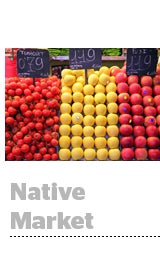 Marketers hunger for native ads and publishers, spurred by the format’s lucrative cost, are happy to feed it to them. Yet while most publishers – 93% according to a survey conducted by the Online Publishers Association – claim to have a native offering, 47% of marketers said they were unsatisfied with their ability to distribute native content, even though two-thirds called the format ‘interesting and valuable.’
Marketers hunger for native ads and publishers, spurred by the format’s lucrative cost, are happy to feed it to them. Yet while most publishers – 93% according to a survey conducted by the Online Publishers Association – claim to have a native offering, 47% of marketers said they were unsatisfied with their ability to distribute native content, even though two-thirds called the format ‘interesting and valuable.’
Enter an influx of exchanges and technologies catering specifically to native advertising. The question is: How do these vendors differentiate?
The 614 Group’s recent study, the Native Advertising Technology Vendor Study, aims to help publishers and advertisers vet vendors that can help them with their native strategies.
“Marketers want to spend money in this channel, and if publishers give them what they’re looking for, they’ll grow their revenue,” said Rob Rasko, founder and CEO of the consultancy 614 Group.
The study includes responses from native technology vendors Nativo, Solve Media, Outbrain, ShareThrough, TripleLift, Taboola, Polar, AdsNative and Adaptly, in an attempt to tease out their similarities and differences.
All of them had a few things in common: they support multiple types of formats, such as text, video, and mobile; they label sponsored content; and they match the look and feel of the host site. But then the differences start.
While most native executions are viewed in-page, some require the viewer to leave the site when they click, a key trait Rasko said publishers need to be aware of when evaluating vendors. “Which is better is up to each publisher’s goals and ultimately a result of what they are earning from these placements,” he said.
There’s also a split between native executions that work in container formats and those created in so-called white space. “Then how the unit is actually constructed is a resource question,” Rasko said. Some publishers may not want to create in white space, while for others, this may give them the flexibility and additional control over the experience they desire.
One finding was that many vendors handle monetization of native placements for the publisher. “As native becomes more mainstream, that’s going to change, and it should trend towards selling in-house,” Rasko said, because native could be sold as part of a larger package.“It’s really about connecting the content marketing efforts. If I’m Coca-Cola and creating a piece of content that’s not an advertisement, but I want people pointing at it, publishers need to think about how to offer that in their sales process,” Rasko said.
Native offerings also address concerns around viewability. “There is an opportunity to use native as a creative way to make ads more viewable. One way is about pulling a user into a space on page where they might not have seen it,” which would have the effect of making more ads below the fold viewable.
Finally, there’s scale. While marketers may complain about a lack of distribution, that’s not actually the reality Outbrain, for example, has 100,000 sites and 550 million uniques, and Sharethrough gets 231 million uniques from 250 sites. “A lot of these guys have big reach,” Rasko said, making large native campaigns with sizeable budgets possible, even if most brands aren’t fully leveraging these platforms just yet.









